
The geography of Alabama describes a state in the Southeastern States in North America. It extends from high mountains to low valleys and sandy beaches. Alabama is 30th in size and borders four U.S. states: Mississippi, Tennessee, Georgia, and Florida. It also borders the Gulf of Mexico.

Lauderdale County is a county located on the western edge of the U.S. state of Tennessee, with its border the Mississippi River. As of the 2010 census, the population was 27,815. Its county seat is Ripley. Since the antebellum years, it has been developed for cotton as a major commodity crop.

Haywood County is a county located in the U.S. state of Tennessee, in the region known as West Tennessee. As of the 2010 census, the population was 18,787. Its county seat and largest city is Brownsville. It is one of only two remaining counties in Tennessee, along with Shelby County, with a majority African-American population.

Brownsville is a city in Haywood County, Tennessee, United States. It is the county seat of Haywood County, located in the western Tennessee Delta. Its population as of the 2010 census was 10,292, down from 10,748 at the 2000 census. The city is named after General Jacob Jennings Brown, an American officer of the War of 1812.

Montezuma National Wildlife Refuge is a wildlife preserve operated by the United States Fish and Wildlife Service, encompassing part of the Montezuma Swamp at the north end of Cayuga Lake. The 10,004-acre (40.48 km2) preserve is composed of swamps, pools and channels and is a stopping point for migratory birds.

The Hatchie River is a 238-mile-long (383 km) river in northern Mississippi and southwestern Tennessee. It is of considerable geographic, cultural, and historic significance. In large measure this is because it is the only major river of West Tennessee that has never been impounded, channelized, or otherwise modified by human activity to any major degree, although several of its tributaries have. Its environs are indicative of what much of West Tennessee must have resembled prior to the time of European settlement in early 19th century.
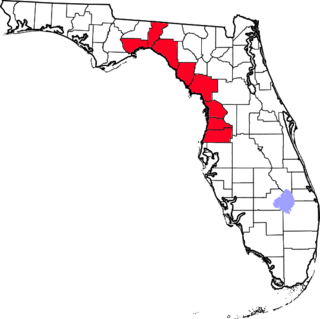
The Nature Coast is an informal, unofficial region of the U.S. state of Florida. The broadest definition of the Nature Coast includes the eight counties that abut the Gulf of Mexico along the Big Bend Coast defined by geologists: from west to east, Wakulla, Jefferson, Taylor, Dixie, Levy, Citrus, Hernando, and Pasco counties.

The Wheeler National Wildlife Refuge is a 35,000 acre (142 km2) National Wildlife Refuge located along the Tennessee River near Decatur, Alabama. Named after Major General Joseph Wheeler, it was established to provide a habitat for wintering and migrating birds in the eastern United States.

The Choctaw National Wildlife Refuge is a 4,218 acre (17.07 km²) National Wildlife Refuge located along the Tombigbee River near Coffeeville, Alabama. Named after the Choctaw tribe, it was established to provide a wood duck brood habitat and serve as a protected wintering area for waterfowl.
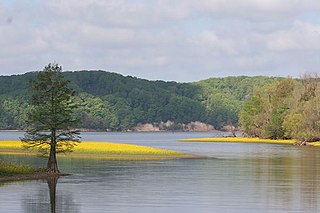
Tennessee National Wildlife Refuge is a National Wildlife Refuge of the United States located along the shores of the Tennessee River in West Tennessee. It was established in 1945 where the impoundment of Kentucky Lake by the Tennessee Valley Authority has created a more-or-less permanent wetlands environment favored by many species of waterfowl. The entire refuge area is 51,359.46 acres (207.84 km²) in three units: From north to south they are Big Sandy, Duck River, and Busseltown.

Reelfoot National Wildlife Refuge is a part of the U.S. system of National Wildlife Refuges consisting of an area of Northwest Tennessee and Western Kentucky that consists primarily of a buffer zone around Reelfoot Lake, Tennessee's only large natural lake. It formed after the New Madrid earthquakes of 1811–1812 and is one of the Mississippi River Basin's richest locations for waterfowl, aquatic life, and other wildlife.

Hatchie National Wildlife Refuge is an area of swampy bottomland consisting of a portion of the floodplain of the Hatchie River in West Tennessee, covering 11,556 acres in southern Haywood County and central Hardeman County. It is a rich environment for aquatic life and waterfowl. The refuge is bisected by both Interstate 40 and U.S. Route 70 and hence passed through by almost all motor vehicle traffic between Nashville and Memphis. Wildlife includes Fish, Snakes, and Mammals.

Lower Hatchie National Wildlife Refuge, part of the U.S. National Wildlife Refuge system, is a 9,451-acre (38.25 km2) area of wetlands associated with the confluence of the Hatchie River and the Forked Deer River in West Tennessee near the confluence of the Hatchie River with the Mississippi River. Located in parts of southwestern Lauderdale and northern Tipton counties, it is a rich environment for both aquatic life and waterfowl.

Cross Creeks National Wildlife Refuge is a part of the U.S. system of National Wildlife Refuges located along the Lake Barkley impoundment of the Cumberland River in Stewart County, Tennessee near Dover, covering 8,862 acres (35.86 km2). It provides habitat for a wide variety of waterfowl and aquatic plant life in what is a largely wetlands environment. Cross Creeks is the only National Wildlife Refuge located entirely in Middle Tennessee as of 2006.

Chickasaw National Wildlife Refuge is a 25,006-acre (101.20 km2) National Wildlife Refuge located along the Mississippi River in the northwestern part of Lauderdale County in West Tennessee. The area is noted for a diversity of wildlife, notably white-tailed deer, wild turkey, beaver, and waterfowl. Established in 1985, it occupies land that was once owned by the Anderson Tully Inc of Memphis, Tennessee.
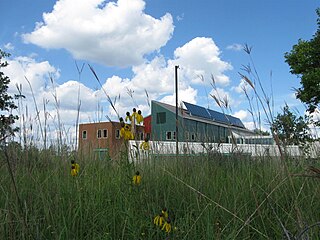
The Minnesota Valley National Wildlife Refuge is a 14,000-acre (5,666 ha) National Wildlife Refuge in eastern and central Minnesota. Located just south of the city of Minneapolis, it is one of fourteen Regional Priority Urban Wildlife Refuges in the nation. Many parts of the Refuge are near large establishments of the Twin Cities; the Bloomington Education and Visitor Center and two trailheads are located just blocks from the Mall of America, the Wilkie Unit is just east of Valleyfair and the Louisville Swamp Unit is just south of Minnesota Renaissance Festival.
West Tennessee National Wildlife Refuge Complex is a National Wildlife Refuge complex in the state of Tennessee.
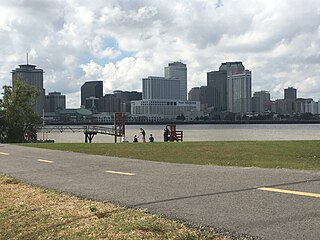
The Mississippi River Trail is a designated bicycle and pedestrian trail that traverses the shores of the Mississippi River in the United States. The trail extends from the headwaters at Lake Itasca in Minnesota to near the mouth of the river in Venice, Louisiana. Much of the trail’s 3,000 miles (4,800 km) follows roadways used by motor vehicles, although some of the route is on multi-use trails. The segment in Minnesota has been designated as U.S. Bicycle Route 45, part of the U.S. Bicycle Route System.
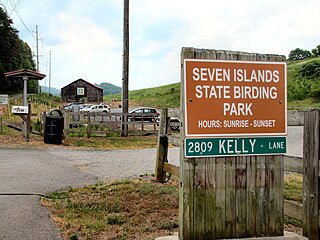
Seven Islands State Birding Park is a state park in Knox County, Tennessee located east of Knoxville near Kodak along the French Broad River. The park was created for birdwatching. The diverse grassland landscapes and the river create a habitat for more than 180 species of birds.













